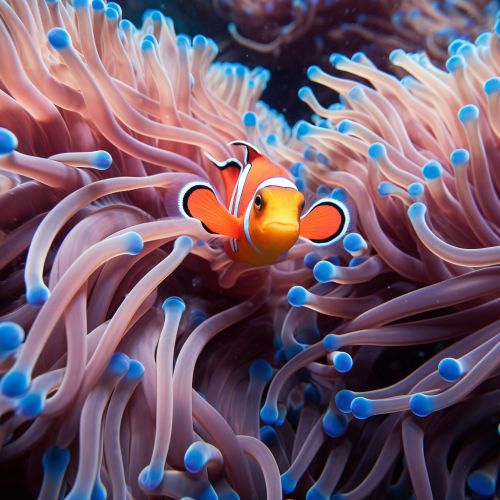Symbiosis
Introduction
Symbiosis is a biological phenomenon where two different species live in close proximity and interact in a manner that benefits one or both of them. The term, derived from the Greek words "syn" (together) and "biosis" (living), was first coined by German mycologist Heinrich de Bary in 1879. Symbiosis can occur between any combination of plant, animal, and microbial species.
Types of Symbiosis
There are three main types of symbiosis: mutualism, commensalism, and parasitism.
Mutualism
Mutualism is a type of symbiosis where both organisms benefit from the relationship. An example of this is the relationship between bees and flowering plants. Bees collect nectar from the flowers to make honey, while the flowers get pollinated in the process.
Commensalism
Commensalism is a type of symbiosis where one organism benefits while the other is neither harmed nor benefited. An example of this is the relationship between barnacles and whales. Barnacles attach themselves to the skin of whales, gaining a place to live and feed, while the whale is generally unaffected.
Parasitism
Parasitism is a type of symbiosis where one organism (the parasite) benefits at the expense of the other (the host). An example of this is the relationship between ticks and mammals. Ticks feed on the blood of mammals, often causing harm to the host.
Symbiosis in Different Ecosystems
Symbiosis can be found in various ecosystems, from the deepest parts of the ocean to the highest mountain peaks.
Marine Symbiosis
In marine ecosystems, symbiosis is a common occurrence. For example, the relationship between clownfish and sea anemones is a classic example of mutualistic symbiosis. The clownfish protects the anemone from predators and provides it with food, while the anemone provides the clownfish with protection from predators with its stinging tentacles.
Terrestrial Symbiosis
On land, symbiosis is also prevalent. The relationship between mycorrhizal fungi and plant roots is an example of mutualistic symbiosis. The fungi help the plant absorb nutrients from the soil, while the plant provides the fungi with sugars produced through photosynthesis.
Symbiosis and Evolution
Symbiosis plays a significant role in the process of evolution. It can drive speciation, the process by which new species are formed. For example, the evolution of mitochondria, an essential component of eukaryotic cells, is believed to have originated from a symbiotic relationship between an ancestral prokaryotic cell and an aerobic bacterium.
Symbiosis in Human Health
Symbiosis is also crucial in human health. The human gut is home to a vast number of microorganisms, known as the gut microbiota. These microorganisms have a symbiotic relationship with humans, aiding in digestion, immune function, and other physiological processes.
Conclusion
Symbiosis is a complex and fascinating biological process that plays a vital role in the survival and evolution of many species. It is a testament to the interconnectedness of life on Earth and the intricate balance that sustains it.


